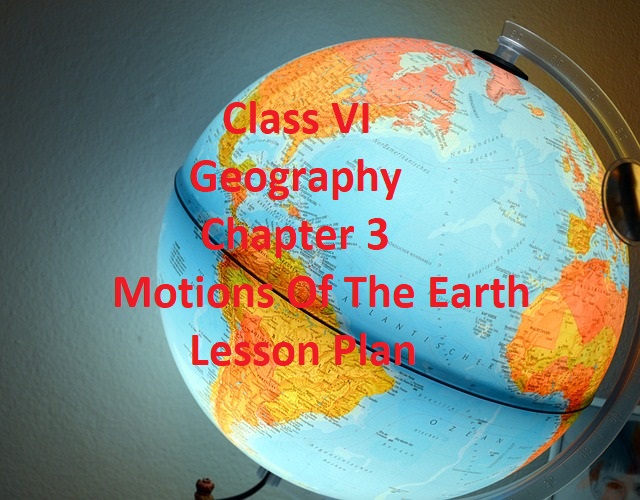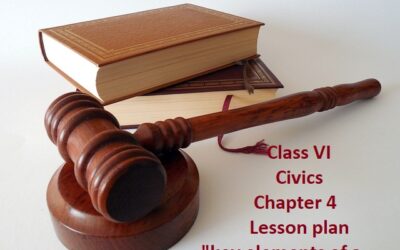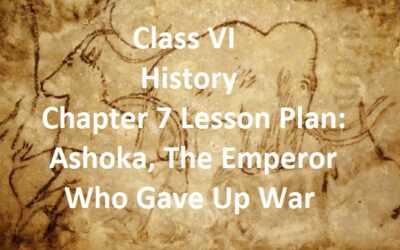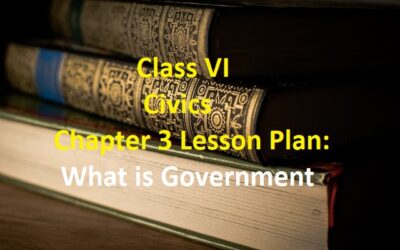Class VI Geography Chapter 3 Motions Of The Earth Lesson Plan
Class VI Geography Chapter 3 Lesson plan is an activity that a teacher has to perform before the actual teaching takes place. It is the road map for any teacher. Moreover, effective lesson planning provides the students with the necessary structure and direction. It also takes care of the diverse needs of our students. Class VI Geography Chapter 3 Lesson plan provides better resources that are integral to students. This lesson plan of class VI is full of classroom activities that children will enjoy doing. It will also allow teachers to critically reflect on and improve our teaching and learning practice. It ensures every minute of class time in teaching new concepts. Class VI Geography Chapter 3 lesson plan will help you to reach every child with a clear plan in mind.
For Class VI History Chapter 2 Lesson Plan – As Per NCF
Class VI Geography Chapter 3 Motions Of The Earth Lesson Plan
Topics covered:
Geography
Chapter 3: Motions of the earth
__________________________________________________________________________________________________
Class VI Geography Chapter 3 Motions Of The Earth Lesson Plan
General Objective:
Firstly, to develop an interest in the subject.
Secondly, to apply the knowledge practically in real life.
Finally, developing scientific temperament among the students.
Specific Objective:
- Students will acquire knowledge about the rotation and revolution of the earth.
- They will also know about the difference between rotation and revolution
- Students will also learn how day and nights are caused and season changes.
Checking Previous Knowledge:
At first, the teacher checks the previous knowledge of the students by asking a question.
Do you think that the earth rotates?
How is day and night caused?
Read about rotation and revolution in Hindi पृथ्वी की गतियां
Introducing Topic:
Now, the teacher introduces the topic by asking basic questions like:
Teacher: It is morning in India. Do you think it will be morning in U.S.A. also now.
Student’s response: Yes teacher/ No teacher. (mixed answer)
Teacher: Do you think that our earth rotates?
Student’s response: Yes teacher/ No teacher. (mixed answer)
Teacher: When it rotates at one point (on it’s axis) what is it called?
Student’s answer: rotation, axis, revolution (mixed answer)
Teacher: How are day and night caused?
Now, the students are unable to answer this question.
Statement of Topic
So, the teacher will announce the topic.
Today we are going to study about How are days and nights caused?
Teaching Method:
First, the teacher plays an interesting video on the rotation of the earth.
http://https://www.britannica.com/video/152185/role-orbit-axis-Earth-seasons
Class VI Geography Chapter 3 Motions Of The Earth Lesson Plan
Teaching aids:
Text Book, Black Board, smart board, Globe
Technique:
Interactive with common examples.
However, the teacher uses various methods to make the topic interesting by interacting with the children in the class.
Thereafter, by asking very simple questions, the teacher draws the attention of the class.
But, also make sure that the children are involved in the discussion.
Therefore, While interacting with the students, the teacher also tells about rotation.
Content/ Teaching Points:
- Introduction
- Two types of motion
- Rotation
- Revolution
- Orbital plane and circle of illumination.
- Leap year
- Summer solstice
- Winter solstice
- Equinox.
Teaching Method: Explanation with the help of activity.
The teacher on the very first day will explain rotation of the earth on board.
Then, the same thing will be explained with the help of an activity.
First Activity To Explain Rotation – How Days and Nights Are Caused?
Aim: To understand how days and nights are caused.
Time: 20 minutes
Materials required: A football or a Round balloon.
Procedure:
The teacher takes a football and a torch.
Marks a point on football or balloon to represent a town X.
Places the ball on table in such a way that town X remains in dark.
Now, the teacher switches on the torch.
Asks a student to rotate the football from left to right slowly and observe carefully.
As the ball moves slowly, town x will have its sunrise.
Ball continues to rotate and point x will be now facing the sun. (it’s the noon time)
As the ball rotates further, point x will move away from the sun. It’s evening time (sunset)
Challenging Question: Where is the circle of Illumination?
Skills Developed: Observation and thinking skill
Assessment: It will be a classroom activity which will not be assessed.
Class VI Geography Chapter 3 Motions Of The Earth Lesson Plan
Second Activity To Explain Revolution: How The Seasons Change? (Outdoor Activity)
Aim: To understand what is Revolution and how it causes change in seasons.
Time: 30 minutes
Materials required: A stick or lime powder to draw an oval shape in the ground.
Procedure:
The teacher asks the students to draw an oval shape in the ground with the help of lime powder.
One student will be asked to stand at the center.
Four students will stand at four extreme ends to represent earth’s position.
All the students have to stand in tilted position.
Now the teacher asks and explains, how the sun’s rays will fall on each position.
Challenging Question: How much time the earth takes to reach from one position to the second.
Skills Developed: Observation and thinking skill scientific temperament.
Assessment: It will be an outdoor activity. Based on this activity, following questions will be asked group wise to check their concepts.
i) What is the difference between Rotation and Revolution?
ii) How much time the earth takes in rotation and revolution?
iii) Which position of earth is called summer and winter solstice.
iv) Which position of earth will have summer season in India?
v) What will be the position of earth when there will be summer in Australia.
NOTE: Marks will be awarded to different groups according to their performance.
Assessment Criteria:
Indicators
- Relevance of Content
- Presentation of information gathered
- Awareness of the information gathered
- Creativeness
- Analytical Skills
Classwork:
i) Objective and short answer type questions will be done.
ii) Long answer type questions will be discussed and done in the class.
Homework:
Draw or paste or make a model of the Motions of the earth.
Values imparted:
- To respect time differences.
- Understanding about the problems of people living near the poles.
Multidisciplinary Integrated learning:
- Hindi and English: what will happen if the earth stops rotating – Discuss.
- Art: Locating a place on the globe with the help of latitudes and longitudes.
- English: Debate on the topic ” Tilt of earth is useful to us”
- Science: why do different crops grow in different seasons?
Learning Outcome:
After the completion of this chapter, students will be able to
Firstly, Exhibit a clear understanding of various motions of the earth.
Secondly, will be able to differentiate between Rotation and Revolution.
get familiarized with terms like the circle of Illumination, equinox, summer, and winter solstice.
Finally, develop a clear understanding of change in seasons.
Remedial Measure:
Each One – Teach One.
Children sitting on the left side of the row will explain the chapter to the children sitting on their right.
Interesting and picture based Chapter 3 Motions Of The Earth – Worksheet can be downloaded from here.
Class VI Geography Chapter 3 Motions Of The Earth Lesson Plan
Conclusion:
I hope the Social Science Lesson Plan of class VI will be of great help to the new teachers.
At last, I request you to comment and subscribe.
So that, you get the notification of the next lesson plan.
Class VI Geography Chapter 1 Lesson Plan: The Earth In The Solar System – Activity Based
Class VI Geography Chapter 2 Lesson Plan – Detailed, Interactive and Child Centric
Was this lesson plan helpful to you? Write your views in the comment box.





It’s really very useful .Thank you
It’s really useful to learning for children’s
We can understand topic easy method
It’s really helpful full than you so much sir
Could u plan to prepare all lessons
Sure. We are working on it. Keep visiting shaping minds
It’s amazing. It was really helpful.
Thanks, Aarti for your short but very encouraging response. Keep visiting shapingminds.in
The plan is too Good and elaborative.
It is also teachers friendly
Thank you
I wants class 6 and 8 SST lesson plan after chapter -5 from each book.
o.k. You will get it within 3 days. Keep visiting shapingminds.in
Its amazing Avinash Sir .
class vi social science lesson plan for the month of October – November is now available on my website. Pl. visit shapingminds.in
Please provide chapter 5 history grade 6 lesson plan
SURE.
It is very useful and easy to follow. Thank you 🙏 My humble request for balance lesson plan also kindly forward.